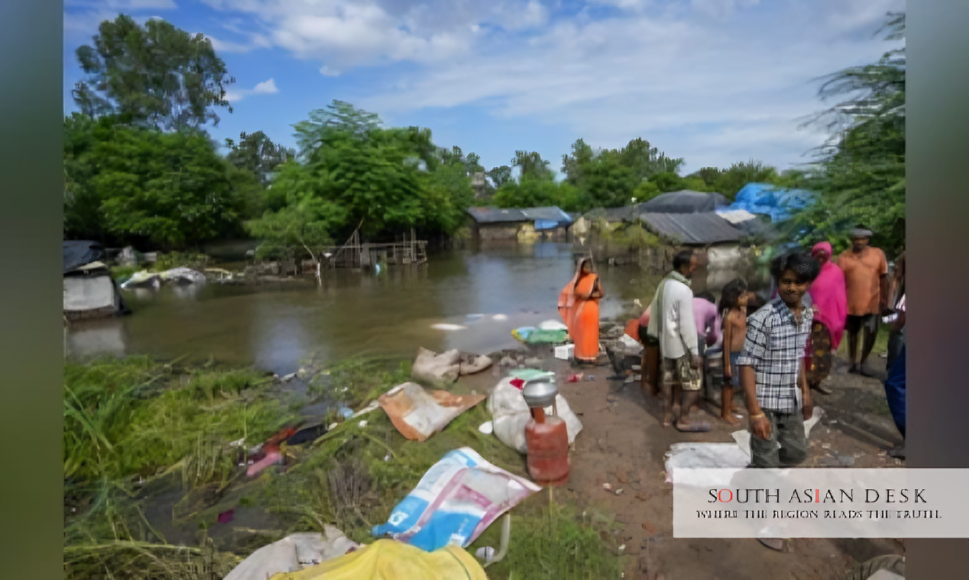The Indian government has launched early discussions with insurers to craft a nationwide India climate linked insurance scheme. This initiative aims to deploy parametric triggers for rapid payouts following extreme weather events. Officials confirmed the talks on Sunday. The scheme addresses India’s vulnerability to floods, heatwaves, and cyclones. It seeks to shift risks from public funds to private insurers.
Why India Climate Linked Insurance Matters for South Asia
India’s push for a unified India climate linked insurance framework carries weight across South Asia. The region faces shared threats from monsoon failures and glacial melts. Bangladesh and Pakistan rank higher in global vulnerability indices. A successful model in India could inspire cross-border adaptations. It would cut fiscal strains on governments already stretched by aid demands. Quick disbursements mean faster rebuilding in agrarian economies. This matters as climate migration swells borders. South Asia lost over $200 billion to weather disasters in the past decade. India’s scheme could stabilise food supplies and livelihoods region-wide.
India Parametric Insurance for Extreme Weather Takes Shape
Federal agencies lead the charge on this India parametric insurance extreme weather programme. The National Disaster Management Authority coordinates with the finance ministry. State-run reinsurer GIC Rejoins top private insurers in brainstorming coverage. No formal proposal exists yet. Discussions focus on triggers like rainfall thresholds or temperature spikes. Payouts activate automatically upon breach. This skips lengthy loss assessments common in traditional policies.
A government official outlined funding paths. Options include reallocating disaster relief budgets. Another route taps minor deductions from utility bills. “If it aligns with rules of urban local bodies, tiny deductions from utility bills could be considered,” the official stated. Insurers would contract directly with municipal bodies under this setup.
Ramaswamy Narayanan, who stepped down as GIC Re chairperson last week, highlighted the drivers. “We’ve seen the frequency and severity of adverse climate events go up, and based on that, this discussion with the government also started.” He participated in initial rounds. The scheme could position India as a pioneer among large economies. Fiji adopted a similar sovereign tool in 2023 for cyclones. Brazil’s COP30 summit in November will spotlight such finance tools.
Industry voices echo support. A senior executive at a major private insurer noted state-level buzz. “States are looking at a window for medium-term implementation. These conversations are gathering pace, and every insurance company is attentive to opportunities.” Seven executives confirmed pilots in multiple provinces.
State Pilots Showcase India Parametric Insurance Extreme Weather Potential
Several states test India parametric insurance extreme weather solutions. These experiments inform the national blueprint. In May 2024, Nagaland claimed $119,000 after heavy rains. The state secured India’s first multi-year disaster coverage from SBI General Insurance. This parametric deal targets floods and landslides in hilly terrain.
Kerala’s co-operative milk federation rolled out heat protection for cattle farmers. High summer temperatures cut milk yields by curbing feed intake. The scheme uses temperature data from the India Meteorological Department. Farmers receive fixed sums when heat indices surpass district norms.
In 2023, Malabar Regional Co-operative Milk Producers’ Union launched Saral Krishi Bima in six districts. This parametric product covers 15,000 cattle at Rs 2,000 per head. Premiums run 4-5%. It monitors 30-day temperature averages in April-May. Claims trigger on deviations from baselines. Insure tech firm IBISA aided design.
Rajasthan, Gujarat, and Maharashtra insured 50,000 self-employed women last year. Each got $5 when temperatures topped 40°C from May 18-25. Such micro-policies build trust in parametric models. They prove viability in underserved rural pockets.
Data Drives Push for India Climate Linked Insurance
India’s exposure to hazards underscores the need for robust India climate linked insurance. The Germanwatch Global Climate Risk Index 2025 places India sixth worldwide for 1993-2022 impacts. Over 400 events struck the nation. These caused at least 80,000 deaths. Economic toll hit nearly $180 billion, adjusted for inflation. Floods in Punjab and Assam wrecked crops in recent seasons. Flash events razed homes and bridges in Uttarakhand and Jammu and Kashmir.
The index weighs fatalities, affected populations, and GDP losses. India’s score of 20.64 reflects absolute scale. Relative metrics adjust for population. Data gaps in the Global South prompt Human Development Index corrections. Still, trends show escalation. A 2022 heatwave across India-Pakistan borders killed over 90. Climate change tripled its odds.
Federal spending on disasters balloons. The government now eyes insurers to absorb more load. Parametric tools fit this shift. They enable pre-set responses without fieldwork delays.
Existing Frameworks Bolster Parametric Integration
India’s agricultural sector already embraces elements of India parametric insurance extreme weather. The Pradhan Mantri Fasal Bima Yojana (PMFBY) stands as the world’s largest crop insurance programme. Launched in 2016, it insured 78.4 crore applications by June 2025. Farmers claimed Rs 1.83 lakh crore across 22.7 crore cases.
PMFBY incorporates parametric via the Weather Information Network and Data System (WINDS). This deploys automatic stations for precise data. It feeds drought alerts and index-based claims. Premiums stay low at 1.5-5%. Governments subsidise 95-98.5%. Enrolments hit 4.19 crore in 2024-25, up 32% from prior year.
The scheme covers loanees mandatorily and non-loanees optionally. It spans kharif and rabi cycles. Tech like satellite imaging and drones speeds assessments. From kharif 2025, states advance shares via escrow for prompt payouts. Penalties hit 12% for delays.
RWBCIS, its weather-based sibling, relies fully on indices like rainfall shortfalls. Together, they insured 15.1 million hectares in 2024-25, dwarfing 2014-15 figures. Tenant and marginal farmers now comprise 24% of users.
Background: Evolution of Parametric Tools in India
Parametric insurance emerged in India via agricultural pilots. Early adopters targeted cyclones and droughts. GIC Re piloted index-based livestock covers in 2010s. IRDAI regulated growth, mandating disclosures. By 2023, heat-index products like Saral Krishi Bima scaled up. Global reinsurers like Munich Re backed Nagaland’s deal. These build on UN frameworks for loss-and-damage finance.
What’s Next for India Climate Linked Insurance
Talks accelerate ahead of budget cycles. Insurers model nationwide scalability. Pilot data will shape triggers. COP30 may announce prototypes. States push for federal matching funds. Integration with PMFBY could launch phases by mid-2026.
As threats intensify, this India climate linked insurance scheme offers a lifeline. It promises speed and scale to outpace disaster’s toll.
Published in SouthAsianDesk, October 7th, 2025
Follow SouthAsianDesk on X, Instagram, and Facebook for insights on business and current affairs from across South Asia.






